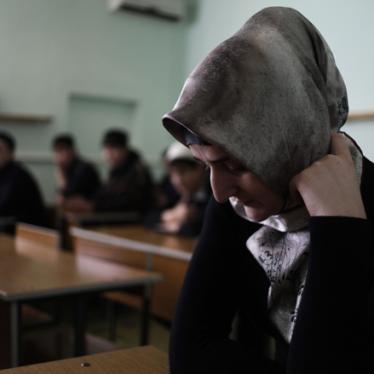So the CIA doesn’t consider “waterboarding” — mock execution by near drowning — to be torture, but the U.S. State Department does.
State Department reports from 2003 to 2007 concluded that Sri Lanka’s use of “near-drowning” of detainees was among “methods of torture.” Its reports on Tunisia from 1996 to 2004 classified “submersion of the head in water” as “torture.” In fact, the U.S. military hasprosecuted variants of waterboarding for more than 100 years — going back to the U.S. occupation of the Philippines in the early 1900s.
If you want to know whether the U.S. government considers the “enhanced interrogation techniques” described in the Senate Intelligence Committee’s report summary on the CIA’s interrogation program to be torture, you could read President Barack Obama’s 2009 statement rejecting the use of waterboarding — or you could click on the State Department’s annual Country Reports on human rights conditions. It turns out that all those methods carried out by the CIA would be torture or cruel, inhuman or degrading treatment if committed by other governments.
The grotesque and previously unreported “anal feeding” and “anal rehydration” discussed in the Senate report may not have been used elsewhere, but the State Department has reported on analogous sexual assault of prisoners as a form of torture. Its 2012 report on Syria described as custodial torture the “forcing of objects into the rectum.”
Stress positions and forced standing also can amount to torture. The State Department’s 2006report on Jordan said that subjecting detainees to “forced standing in painful positions for prolonged periods” was torture. It also described as torture the Iranian practice of “suspension for long periods in contorted positions.”
The same holds true for sleep deprivation and blaring music. In State Department reports on Indonesia, Iran, Jordan, Libya, and Saudi Arabia, sleep deprivation was classified as torture. The 2002 report on Turkey lists “loud music” as a torture method.
The Intelligence Committee chairwoman, Senator Dianne Feinstein, had no qualms about calling the methods used by the CIA torture. In her forward to the summary she says that “under any common meaning of the term, CIA detainees were tortured.”
CIA and former Bush administration officials still insist that the interrogation methods were not torture. They consider the techniques to have been legal and back up that claim by pointing to the Justice Department’s legal memorandums — the infamous and discredited “torture memos.” Tellingly, the summary discusses a 2002 draft letter from the CIA to the attorney general seeking effective immunity from prosecution for their program, suggesting that all along the CIA knew it involved illegal methods.
This is not just about semantics. Torture, whether committed at home or abroad, is a crime under U.S. law. As a party to the UN Convention against Torture, the United States has an obligation to investigate and prosecute those who commit torture. Other countries also have responsibilities to prosecute those within their borders responsible for torture and other ill-treatment.
Those seeking to defend the CIA actions as being lawful not only have to contend with the gruesome detail of the Intelligence Committee report summary, but many years of State Department reporting on torture abroad.







